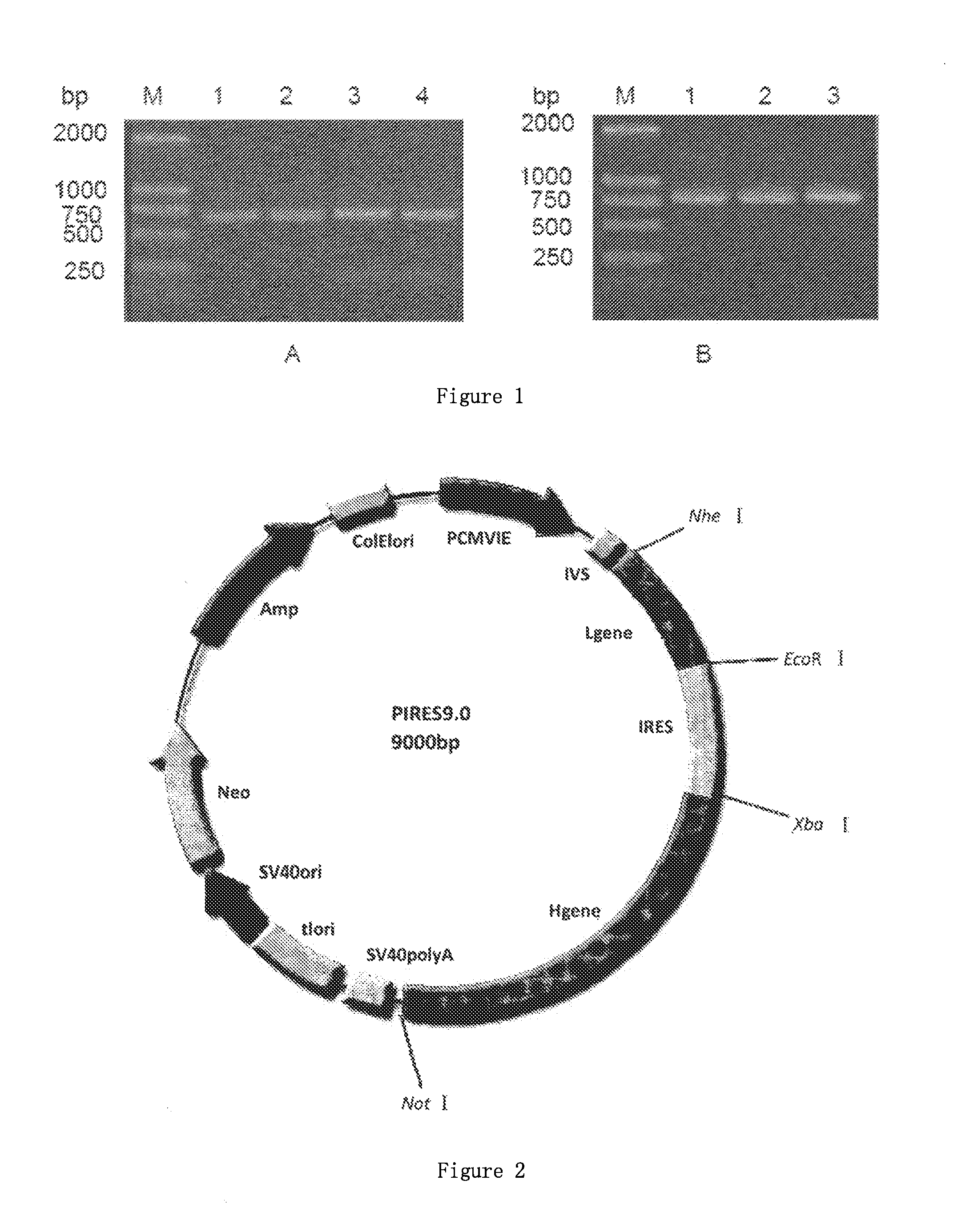Humanized anti-EGFR antibody L4-H3 and coding gene thereof
a humanized antibody and antibody technology, applied in the field of humanized anti-egfr antibody l4h3, and coding gene thereof, can solve the problems of reducing the binding affinity between an antigen and an antibody, negative impacting its function, and murine glycosylation pattern
- Summary
- Abstract
- Description
- Claims
- Application Information
AI Technical Summary
Benefits of technology
Problems solved by technology
Method used
Image
Examples
example 1
The Obtainment of the Coding Genes of the Light Chain and Heavy Chain Variable Region of Antibody
[0049]The protein structure and the amino acid sequence of the murine-human chimeric antibody, cetuximab, is used as a template for computer modeling design of a new antibody. Following design, the process of synthesis of the genes based on these amino acid sequences of the light chain and the amino acid sequence of “variable region+heavy chain constant region 1” of the heavy chain, is undertaken.
[0050]The antibody of the present invention is composed of a light chain L4 and a heavy chain H3; and the heavy chain H3 is composed of a heavy chain variable region (VH), a heavy chain constant region 1 (CH1), a hinge region, a heavy chain constant region 2 (CH2) and a heavy chain constant region 3 (CH3) (H3=VH+CH1+hinge+CH2+CH3). The antibody of the present invention is denoted as L4-H3.
[0051]The light chain L4: the amino acid sequence is shown as SEQ ID NO:1; and the coding gene sequence is s...
example 2
The Expression and Purification of the Antibodies
[0060]A. Construction of the Recombinant Expression Vector:
[0061]The recombinant vector pMD 18-T / L4 and pIRES binary expression vector were enzymatically digested with corresponding restriction endonuclease (NheI and EcoRI), respectively. After agarose gel electrophoresis, the purified target fragments were recovered. The light chain gene fragment L4 and vector fragment were mixed, and reacted with each other for 12 h at 16° C., under the action of linking agents. Transforming Escherichia coli DH5a, picking monoclonal strain, extracting plasmid and sequencing for identification. Results: the light chain coding gene shown as nucleotides at sites 9-729 in SEQ ID NO:2 had been inserted between NheI and EcoRI restriction sites of vector pIRES (in the direction from NheI restriction site to EcoRI restriction site). It is demonstrated that the constructed recombinant vector is right, denoted as recombinant expression vector pIRES / L4.
[0062]T...
example 3
The Functional Properties of the Antibody
[0099]A. Assay of the Binding Ability of Antibody and Antigen with Surface Plasmon Resonance [Biacore]
[0100]Sensor Chip CM5 was purchased from BD Incorporation with product catalog number Br-1000-14; BD BioCoat™ and Matrigel™ Invasion Chamber were purchased from BD Incorporation with product catalog number 354480.
[0101]EGFR proteins were purchased from Sigma Corporation with product catalog number E2645-500UN.
[0102]The binding affinity between antibody and EGFR was assayed with Biacore3000 equipment. The EGFR proteins diluted with 10 mmol / L NaAc and having different pH (4.0, 4.5, 5.0 and 5.5) were formulated, and were pre-concentrated on CM5 chip to select the NaAc diluted protein with optimum pH. The purified antibody (that is, the washing solution obtained in step B of Example 2) was covalently bound to CM5 sensor chip. The mobile phase was HBS-EP (pH7.4), and flow rate was 20 μl / min. The binding affinities between 5 different concentration...
PUM
| Property | Measurement | Unit |
|---|---|---|
| diameter | aaaaa | aaaaa |
| OD | aaaaa | aaaaa |
| flow rate | aaaaa | aaaaa |
Abstract
Description
Claims
Application Information
 Login to View More
Login to View More - R&D
- Intellectual Property
- Life Sciences
- Materials
- Tech Scout
- Unparalleled Data Quality
- Higher Quality Content
- 60% Fewer Hallucinations
Browse by: Latest US Patents, China's latest patents, Technical Efficacy Thesaurus, Application Domain, Technology Topic, Popular Technical Reports.
© 2025 PatSnap. All rights reserved.Legal|Privacy policy|Modern Slavery Act Transparency Statement|Sitemap|About US| Contact US: help@patsnap.com


